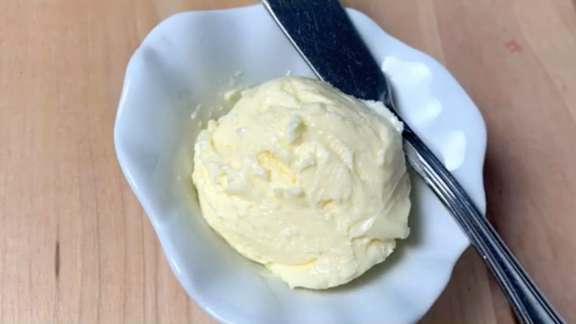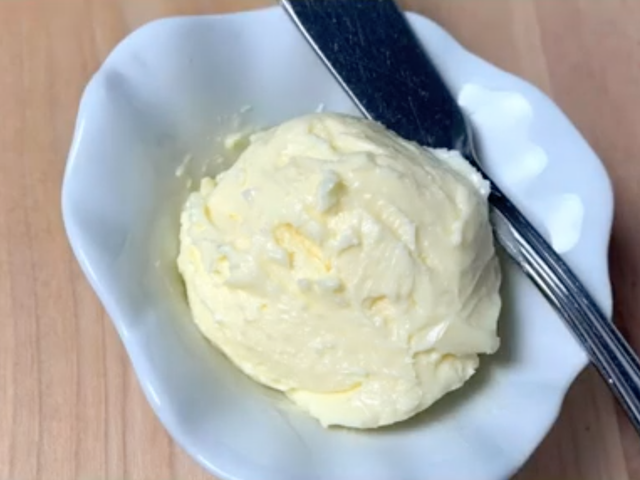
Growing Chefs! Ontario Cultured Butter
Cultured Butter
Share on:
Ingredients
Equipment
Get Organized!
Gather your mis en place; get together all of the equipment needed for the recipe and gather your ingredients.
Get Prepped!
Measure out cream and yogurt into a mason jar, at least 1L. Close the lid tightly, and shake until cream and yogurt are well combined.
Take the lid off the jar, and cover it with a clean dish cloth. Place the jar in a warm area in your kitchen, and let it sit for 24 – 36 hours. The mixture will start to thicken and smell tangy.
Get Cooking!
Seal the jar, and place it in the fridge for about 1 hour, to bring the temperature to about 60°F (this will help speed up the butter making process).
In a large bowl, place the fine mesh strainer lined with cheesecloth, making sure you have enough cheesecloth to hang over the edges slightly.
Option 1: In the bowl of a food processor, add the thickened butter mixture and process on high until the yellow curds begin to separate from the buttermilk, 2 to 3 minutes. It will have the appearance of liquid‑y cottage cheese.
Option 2: In a large bowl or stand mixer, beat the mixture with a beater or whisk attachment on the mixer until the butter starts to separate from the buttermilk, and has the appearance of liquid‑y cottage cheese.
Option 3: Put the butter mixture back into the large well sealed jar, and shake like crazy until you start to see the mixture separating and having the appearance of liquid‑y cottage cheese.
Pour the mixture into the cheesecloth lined fine mesh strainer, and allow it for sit for a couple of minutes to allow the buttermilk to filter through. Taking the ends of your cheesecloth, squeeze out as much liquid buttermilk as possible. Reserve your buttermilk for another use.
In a clean bowl, place the butter ball. Pour about ⅓ cup of very cold ice water overtop, and “wash” the butter by kneading it with a spatula, so draw out any additional buttermilk. Drain the liquid and repeat this process until the water appears clear.
Put the butter on a clean dish towel and gently press to remove any additional buttermilk. Knead the butter a few times, and then flatten the butter. Sprinkle with fine salt to flavour the butter, and knead the salt into the butter a few more times to distribute it evenly. Taste the butter, and adjust with more salt if desired.
Shape the butter into a round using parchment paper, or just into a ball. Wrap tightly with plastic wrap, and use as you would regular butter.

